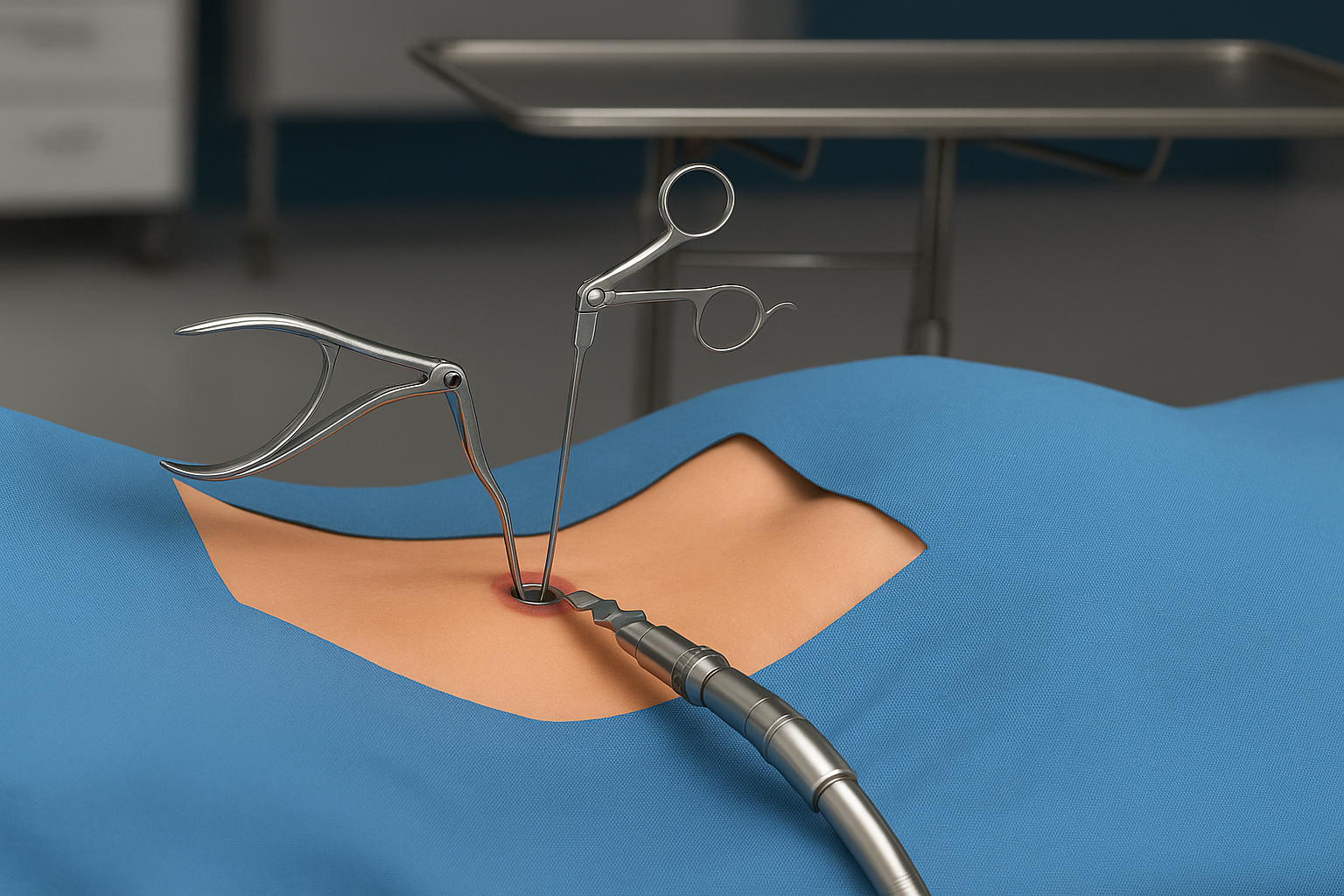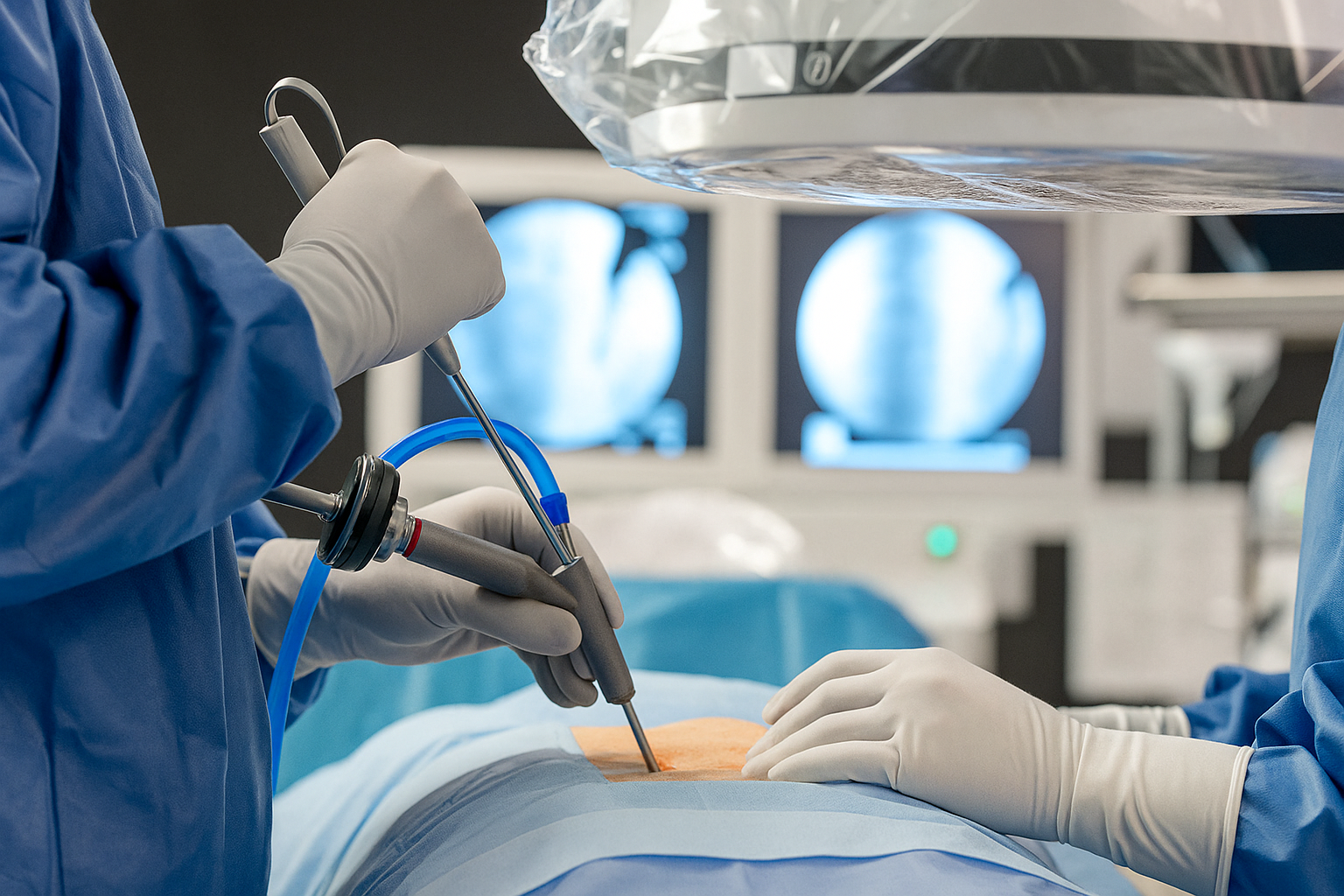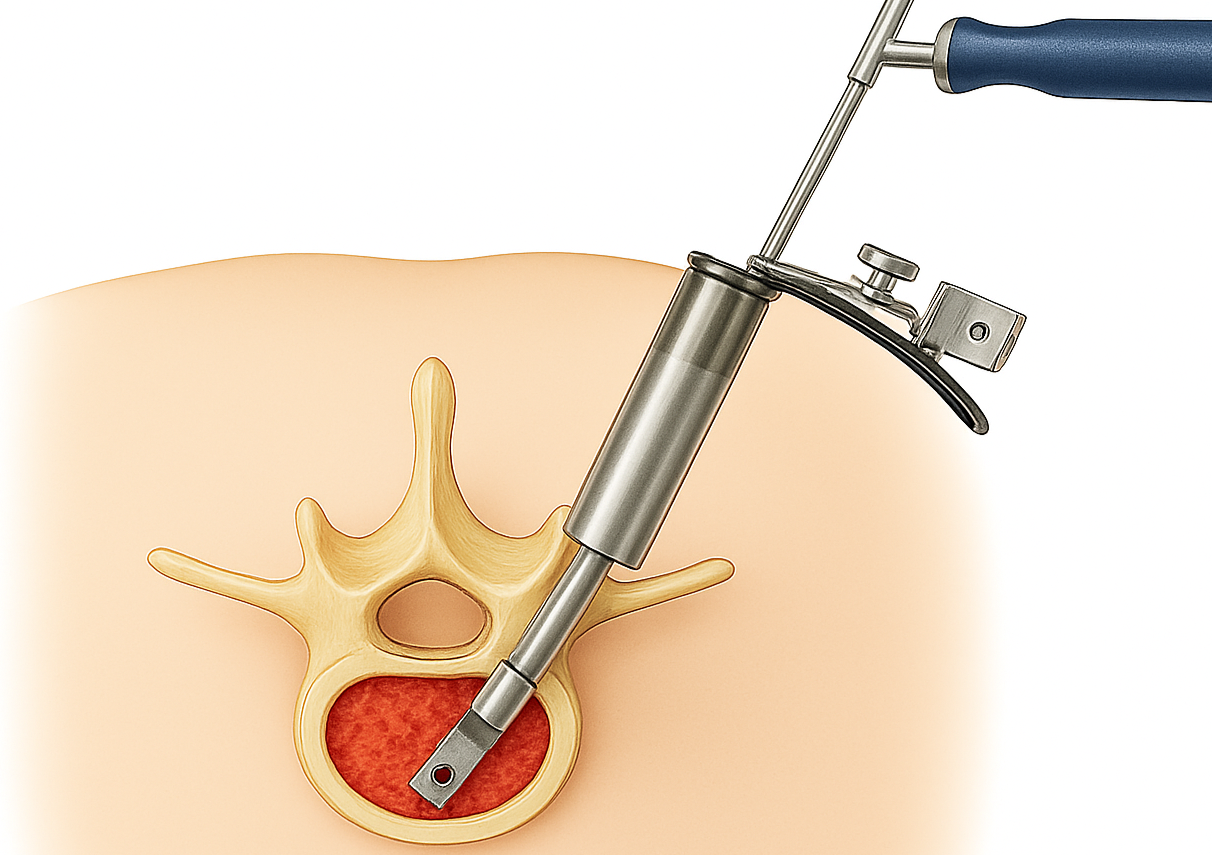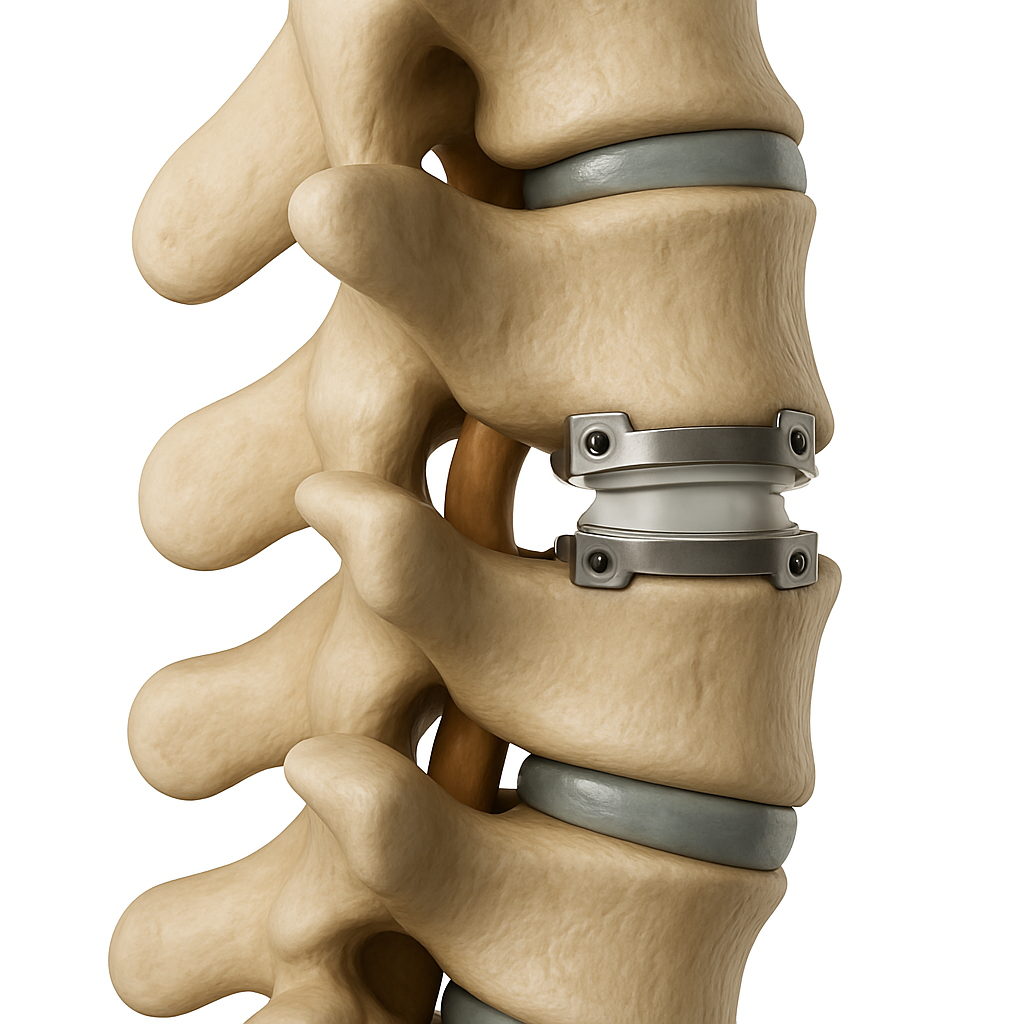Spine Procedures Overview
-

Minimally Invasive Microdiscectomy
Minimally invasive microdiscectomy is a frequently performed and highly effective surgical option for patients with symptomatic disc herniation. The technique utilizes an 18-mm tubular retractor, about the size of a nickel, introduced through a small incision, to excise the herniated disc material. Relative to open discectomy, this approach minimizes soft tissue trauma, decreases intraoperative blood loss, and facilitates a faster postoperative recovery.
-

Minimally Invasive Laminectomy
A minimally invasive lumbar laminectomy, sometimes referred to as minimally invasive lumbar decompression, is a surgical technique used to alleviate pressure on the spinal nerves in the lower back. It is frequently performed to address symptoms associated with spinal arthritis. The procedure aims to limit tissue disruption, lessen postoperative discomfort, promote faster recovery, and provide results comparable to traditional open surgery.
-

Lumbar Endoscopic Laminectomy/Discectomy
An endoscopic lumbar laminectomy or discectomy is one of the newest, least invasive options available for treating pinched nerves in the spine. The procedure is done through an incision no bigger than the tip of a pen, using a tiny camera (endoscope) to guide the surgeon—similar to the way arthroscopic cameras are used in knee surgery. This allows bone spurs or herniated discs that are pressing on the nerves to be carefully removed with minimal soft tissue disruption.
-

Minimally Invasive Lumbar Fusion
In cases of spinal instability secondary to advanced degenerative pathology—including spondylolisthesis, scoliosis, recurrent disc herniation, or severe disc degeneration—surgical management may be recommended. In these cases, both a decompression (laminectomy) to relieve nerve pressure and a spinal fusion to stabilize the spine may be required. With modern minimally invasive techniques, special instrumentation can accomplish surgical goals through much smaller incisions, avoid excessive muscle cutting, and help patients recover more comfortably.
-

Cervical Laminoplasty
Cervical laminoplasty is an advanced surgical procedure used to relieve pressure on the spinal cord in the neck. During the procedure, the surgeon carefully removes or trims the areas that are pressing on the nerves and places a small spacer to create more room for the spinal cord and nerve roots. This is a motion preserving procedure.
-

Anterior Cervical Discectomy and Fusion
Anterior Cervical Discectomy and Fusion, or ACDF, is surgical intervention indicated for cervical disc herniation, radiculopathy, fractures, and spinal instability unresponsive to conservative management. During the procedure, the surgeon removes the damaged disc that is pressing on the spinal cord or nerves and then fuses the affected vertebrae together to stabilize the spine.
-

Cervical Disc Replacement
In artificial cervical disc replacement, a damaged disc in the neck is removed and replaced with an artificial disc made of metal and plastic, similar to hip or knee replacements. Unlike traditional fusion surgery, which locks the bones together with screws and plates, disc replacement keeps the neck moving naturally, which can reduce stress on the vertebrae above and below the treated area.
-

Cervical Foraminotomy
A cervical foraminotomy is a minimally invasive procedure that helps ease nerve pressure in the neck. By enlarging the opening where the nerves exit the spine, the procedure can relieve pain caused by arthritis or herniated discs. It is considered a safe and effective option for many patients.
-

Posterior Cervical Decompression and Fusion
Posterior cervical decompression and fusion is a surgery performed from the back of the neck to relieve pressure on the spinal cord and nerves. Bone or tissue that is compressing the nerves is removed (“decompression”) and instrumentation is placed to stabilize the spine (“fusion”). Over time, the treated segments of the spine form into one solid piece. This procedure is often recommended for patients with spinal stenosis, arthritis, herniated discs, or instability in the cervical spine.
Disclaimer: All materials presented on this website are the opinions of Dr. Patawut “Pat” Bovonratwet, or Dr. B, and any guest writers, and should not be construed as medical advice. Each patient’s specific condition is different, and a comprehensive medical assessment requires a full medical history, physical exam, and review of diagnostic imaging. If you would like to seek the opinion of Dr. B for your specific case, we recommend contacting our office to make an appointment.